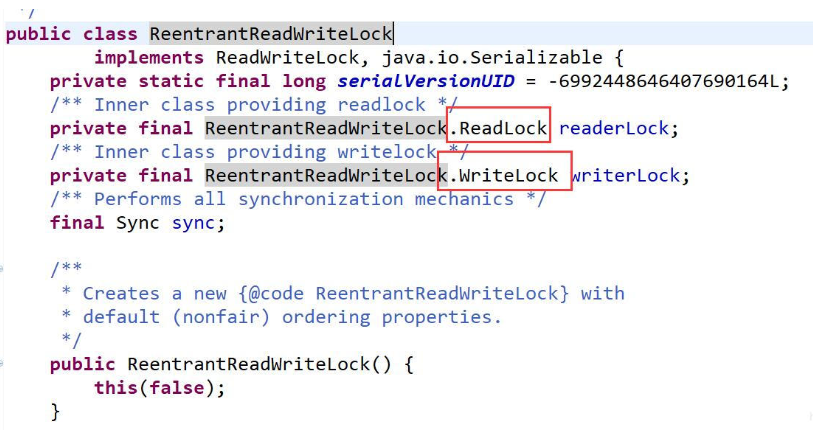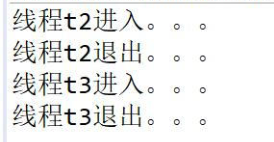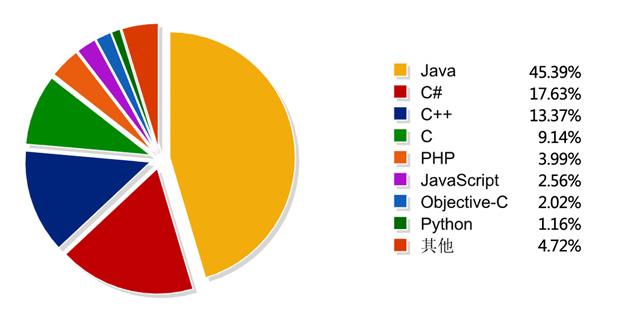阿里一面:ReadWriteLock 读写之间互斥吗?我竟然答不上来。。
开发中遇到并发的问题一般会用到锁,Synchronized存在明显的一个性能问题就是读与读之间互斥;ReadWriteLock是JDK5中提供的读写分离锁。读写分离锁可以有效地帮助减少锁竞争,以提升系统的性能。
ReadWriteLock管理一组锁,一个是只读的锁,一个是写锁。
Java并发库中ReetrantReadWriteLock实现了ReadWriteLock接口并添加了可重入的特性。
而读写锁ReentrantReadWriteLock:读读共享,读写互斥,写写互斥;读写锁维护了一对锁,一个读锁,一个写锁,通过分离读锁和写锁,使得并发性相比一般的排他锁有了很大提升。在读多写少的情况下,读写锁能够提供比排他锁更好的并发性和吞吐量。

从源码中可以看出,读写锁中同样依赖队列同步器Sync(AQS)实现同步功能,而读写状态就是其同步器的同步状态。下面从例子中来说明:读读共享,读写互斥,写写互斥。
代码如下:
public class ReentrantWriteReadLockTest {
ReentrantReadWriteLock lock = new ReentrantReadWriteLock();
ReadLock readLock = lock.readLock();
WriteLock writeLock = lock.writeLock();
public void read(){
try {
readLock.lock();
System.out.println("线程"+Thread.currentThread().getName()+"进入。。。");
Thread.sleep(3000);
System.out.println("线程"+Thread.currentThread().getName()+"退出。。。");
} catch (InterruptedException e) {
e.printStackTrace();
}finally{
readLock.unlock();
}
}
public void write(){
try {
writeLock.lock();
System.out.println("线程"+Thread.currentThread().getName()+"进入。。。");
Thread.sleep(3000);
System.out.println("线程"+Thread.currentThread().getName()+"退出。。。");
} catch (InterruptedException e) {
e.printStackTrace();
}finally{
writeLock.unlock();
}
}
public static void main(String[] args) {
final ReentrantWriteReadLockTest wr = new ReentrantWriteReadLockTest();
Thread t1 = new Thread(new Runnable() {
public void run() {
wr.read();
}
}, "t1");
Thread t2 = new Thread(new Runnable() {
public void run() {
wr.read();
}
}, "t2");
Thread t3 = new Thread(new Runnable() {
public void run() {
wr.write();
}
}, "t3");
Thread t4 = new Thread(new Runnable() {
public void run() {
wr.write();
}
}, "t4");
t1.start();
t2.start();
//t3.start();
//t4.start();
}
}
当我们启动线程t1和t2时,结果如下:

线程t1和t2可以同时进入,说明了读读共享!
当我们启动线程t2和t3时,结果如下:

一个线程必须等待另一个线程退出,才能进入,说明了读写互斥!
当我们启动线程t3和t4时,结果如下:

一个线程必须等待另一个线程退出,才能进入,说明了写写互斥!
来源:https://www.cnblogs.com/liuqing576598117/p/11168528.html
近期热文推荐:
1.1,000+ 道 Java面试题及答案整理(2022最新版)
2.劲爆!Java 协程要来了。。。
3.Spring Boot 2.x 教程,太全了!
4.别再写满屏的爆爆爆炸类了,试试装饰器模式,这才是优雅的方式!!
5.《Java开发手册(嵩山版)》最新发布,速速下载!
觉得不错,别忘了随手点赞+转发哦!


